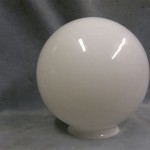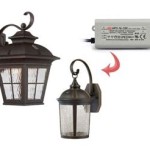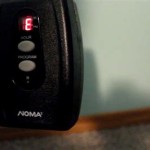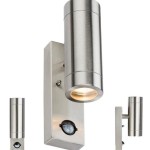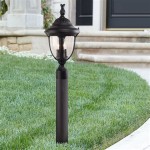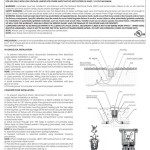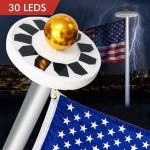Essential Aspects of Solar Cells for Outdoor Lights
Solar cells are a vital component of outdoor lights, as they convert sunlight into electricity. Understanding their essential aspects is crucial for selecting and maintaining efficient lighting solutions. Here are some key points to consider:
1. Efficiency
The efficiency of a solar cell determines how much sunlight it can convert into electricity. It is expressed as a percentage and typically ranges from 15% to 25% for commercially available solar cells. Higher efficiency solar cells produce more electricity, which translates to longer illumination hours for outdoor lights.
2. Material
Solar cells are made from various semiconductor materials, including monocrystalline silicon, polycrystalline silicon, and amorphous silicon. Monocrystalline silicon offers the highest efficiency, followed by polycrystalline silicon and amorphous silicon. The choice of material affects the cost, durability, and performance of the solar cell.
3. Size and Shape
The size and shape of a solar cell determine its power output and aesthetic appeal. Larger cells generate more electricity, but they may also be more expensive and require more space on the light fixture. The shape of the cell can influence the efficiency of light absorption based on the angle of sunlight.
4. Durability
Outdoor solar cells must be durable to withstand harsh weather conditions, such as rain, wind, and extreme temperatures. They are typically encased in protective casings made of materials like tempered glass or polymers to ensure longevity and resistance to environmental factors.
5. Voltage and Current
Solar cells produce a specific voltage and current output, which should be compatible with the lighting system. The voltage and current determine the brightness of the light and the duration of illumination. Matching the solar cell's output to the light's requirements is crucial for optimal performance.
6. Maintenance and Cleaning
Solar cells require minimal maintenance, but regular cleaning is essential to maintain efficiency. Dust, dirt, and debris can accumulate on the surface of the cell, reducing its ability to absorb sunlight. Periodically cleaning the solar cell with a damp cloth or mild detergent ensures optimal performance and longevity.
7. Cost
The cost of solar cells varies based on factors such as efficiency, material, size, and durability. Monocrystalline silicon solar cells are typically more expensive than polycrystalline silicon and amorphous silicon cells. The overall cost should be considered in relation to the expected lifespan and performance of the outdoor light.
Conclusion
Understanding the essential aspects of solar cells is crucial for selecting and maintaining efficient outdoor lights. By considering factors such as efficiency, material, durability, and cost, you can ensure that your outdoor lighting solutions provide optimal illumination, long-lasting performance, and value for your investment.

How To Make Solar Power Outdoor Lights Just Measuring Up

12v Solar Lighting System Durasol Low Voltage Outdoor Kit

How To Make Solar Power Outdoor Lights Just Measuring Up

Convert Outdoor Light To Solar 3 Easy Ways With Diagrams Spheral

Sunapex Replacement Solar Panel Suitable For 6w 48ft Soalr String Lights

Mini Solar Outdoor Light Manufacturers And S China Factory Nomo Group

How To Make Solar Power Outdoor Lights Just Measuring Up

What Are The Differences Between Solar Panels For Outdoor Lights Gama Sonic

Outdoor Dual Ground Solar Spot Light With Separate Panel

How To Make Solar Power Outdoor Lights Just Measuring Up
Related Posts
